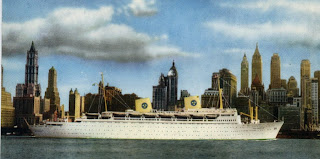






This is the Glasgow branch of the Forth and Clyde canal which joined up with the Monkland canal,[now filled in]
Digging for the canal started in 1768 ,it has to be remembered at this time the depth of the River Clyde at Glasgow was a mere 4ft,so the canal that ran through Glasgow a short distance from the city centre was of great importance.
Port Dundas as it is called was built high on a hill so that the chimneys from the factory's and mills would not pollute the city below.
Barges were able to join the canal at Bowling and sail into the heart of Glasgow, a great plus for merchants who previously had to rely on goods coming from Port Glasgow by poor quality roads.
The mills have now been converted into flats ,it still comes as a surprise to people that a canal is only a short walk from the city centre.






























